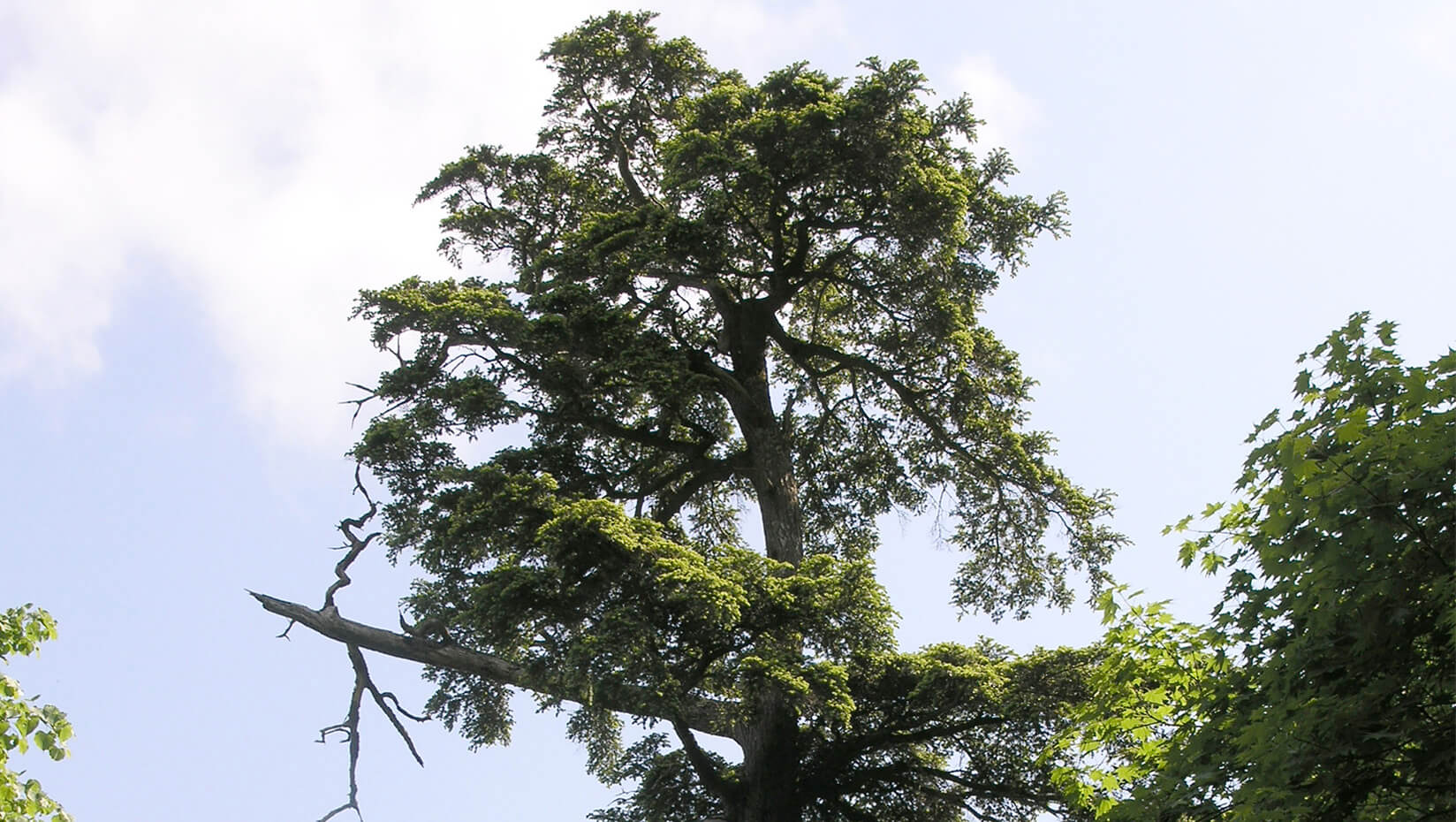
UMaine-led team discover new hemlock species
The Ulleungdo hemlock (Tsuga ulleungensis) was identified by an international team led by Garth Holman, a research associate in the School of Biology and Ecology at the University of Maine. The team published its findings in the journal Systematic Botany.
While discovering a new tree species is not uncommon, finding a new temperate conifer is unusual. Most plant species are found in the tropics, where diversity is higher. Conifers and other gymnosperms (nonflowering plants) constitute less than 10 percent of living plant species, whereas angiosperms (flowering plants) make up the majority.
In recent decades, only a handful of new species of temperate conifers have been identified, often in the mountains of eastern Asia and central America.
The discovery of Ulleungdo hemlock stems from research on the hemlock woolly adelgid by Nathan Havill of the U.S. Forest Service. In North America, the Asian insect is an invasive that threatens the eastern hemlock; in eastern Asia, the hemlock woolly adelgid co-evolved with southern Japanese hemlock.
As part of his Ph.D. research, Havill studied a molecular phylogeny of hemlock woolly adelgids and their host plants. The Ulleungdo hemlock was thought to be a disjunct population of the southern Japanese hemlock until Havill’s research found that the two species are genetically dissimilar.
That led Holman, who is a UMaine alumnus, Havill and other members of the research team to work to identify the species growing on Ulleungdo and to better understand its evolution in relation to other hemlocks.
Hemlock, like some other coniferous species, typically form large populations, have long life spans and readily cross genes among populations — conditions that delay evolutionary divergence by prolonging retention of ancestral polymorphisms and admixing parental genomes, resulting in morphologically similar species.
Using DNA sequencing, the researchers assessed the phylogenetic relationships of Ulleungdo hemlock to other Tsuga species, including the southern Japanese hemlock (T. sieboldii).
Ulleungdo hemlocks resemble southern Japanese T. sieboldii with their hairless branches. However, Ulleungdo hemlock have larger leaves, wider petioles, larger leaf notches, buff-colored stomatal bands, smaller resin canals, and distinct wavy margins to their cone-scale bracts.
Phenological studies by researcher Peter Del Tredici at the Arnold Arboretum uncovered substantial differences in phenology between hemlock species. Ulleungdo hemlock bud earlier and their growth period extends longer than Japanese hemlocks, which may be useful characteristics for cultivation.
While Ulleungdo hemlocks are genetically most closely related to the northern and southern Japanese hemlocks, the morphological and phenological distinction led the research team to describe the new species, T. ulleungensis.
It is plausible that T. ulleungensis evolved by anagenesis (where one taxon replaces another) versus cladogenesis (an adaptive radiation that occurs when single progenitor species gives rise to multiple descendant species). Anagenesis is most common on islands with relatively homogenous habitats. Nearly all the endemic species on Ulleungdo were derived via anagenesis, according to the researchers.
More than 40 endemic angiosperms are found on Ulleungdo; T. ulleungensis are the first endemic gymnosperm to be described from the island.
On Ulleungdo, the hemlock grows on north-facing rocky ridges up to 1,640 feet above sea level where the forests are dominated by Japanese white pine.
There is no census on the Ulleungdo hemlock, but the high number of endemic species on the island, much of which remains undeveloped, has led to it being cited for conservation.
According to the International Union for Conservation of Nature criteria, T. ulleungensis could be considered critically endangered due to its restricted geographic range.
The research to identify the new species, part of the Ph.D. dissertation research completed in 2014 by Holman, was supported by a National Science Foundation Gymnosperm Tree of Life grant and a USDA National Institute of Food and Agriculture award.
In addition to Holman, Havill and Del Tredici, other members of the research team are Nam Sook Lee, Ewha Womans University; Richard Cronn, U.S. Forest Service; Sarah Mathews, Australian National Herbarium; Linda Raubeson, Central Washington University; and Christopher Campbell, University of Maine.
Contact: Margaret Nagle, 207.581.3745
